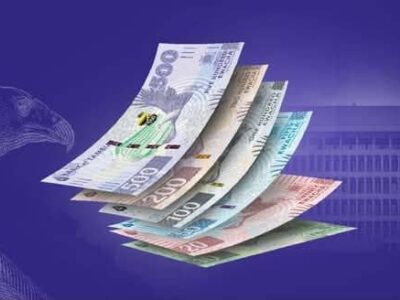Zambia’s annual inflation rate has accelerated to 9.6 percent this month due to a rise in prices of selected non-food items, as it records a trade surplus of K6.1 billion.
The annual inflation for February 2023, increased to 9.6 percent from 9.4 percent recorded in January 2023, Zambia Statistical Agency (ZamStats) interim statistician General Mulenga Musepa said.
Read more: Zambia’s annual inflation rate dips to 9.4%, as country records K.5bn trade deficit
This means that on average, prices of goods and services increased by 9.6 percent between February 2022 and February 2023.
Addressing journalists in Lusaka on Thursday, Musepa indicated that annual food inflation remained the same at 11.6 percent from the January figure.
He said this development was mainly attributed to mealie meal, maize grain, rice, fish, dried Kapenta both Mpulungu and Siavonga and vegetables.
Musepa said annual non- food inflation for February increased to 6.9 percent from 6.5 percent in January 2023.
This out turn was mainly attributed to increases in prices of non-food items such as Fuels & lubricants and Charcoal.
He indicated that of the overall 9.6 percent annual inflation, food and non-alcoholic beverages group contributed 6.6 percentage points, while non-food items accounted for 3.0 percentage points.
“Of the 3.0 percentage points housing, water, electricity, gas and other fuel contributed the highest at 0.9 percentage points, followed by transport, clothing and footwear at 0.6 and 0.5 percentage points each,” Musepa said.
He said the rest of the non-food group accounted for the remaining 1.0 percentage points.
Musepa indicated that Lusaka province contributed the highest at 3.0 percentage points to the overall annual inflation of 9.6 percent in February 2023.
Copperbelt province was second, contributed 2.0 percentage points to the overall inflation of 9.6 percent in the month under review.
He pointed out that Eastern province contributed 9.0 percentage points, while North-Western provinces and Western province had the lowest contributions of 0.4 percentage points each.
On trade, Musepa indicated that total trade for the month of January 2023 was K35.9 billion while that of 2022 for the same period was K27.2 billion, representing a 32.2 percent increase.
“The total value of exports via all modes of transport for the period January 2023 was K21.0 billion. Road transport accounted for the highest at K12.5 billion representing 59.4 percent share.
“Rail transport was second at K0.6 billion and Air transport was third accounting for K0.3 billion. Other modes of transport accounted for K7.6 billion,” he said.
Musepa said total value of imports via all modes of transport for January 2023 was K14.9 billion.
In terms of volumes, he said a total of 570 thousand tonnes of imports was recorded for the period January 2023, of which road transport accounted for 355.8 thousand tonnes, representing the highest share at 64.4 percent.
Musepa said railway transport accounted for 24.5 thousand tonnes, representing the share of 4.3 percent in the period under review.
He said Zambia recorded a trade surplus of K6.1 billion in January 2023 compared to a deficit of K0.5 billion in December 2022.
Musepa said exports mainly comprising domestically produced goods, increased by 42.6 percent to K21.0 billion in January 2023 from K14.7 billion in December 2022.
This was mainly on account of 43.8, 70.0 and 80.7 percent increase in export earnings from intermediate goods raw materials and capital goods respectively.
Imports decreased by 1.6 percent to K14.9 billion in January 2023 from K15.2 billion in December 2022.
He said this was mainly as a result of 15.5, 31.9 and 11.5 percent decreases in import bills of intermediate goods, capital goods and raw materials respectively.
WARNING! All rights reserved. This material, and other digital content on this website, may not be reproduced, published, broadcast, rewritten or redistributed in whole or in part without prior express permission from ZAMBIA MONITOR.












Comments